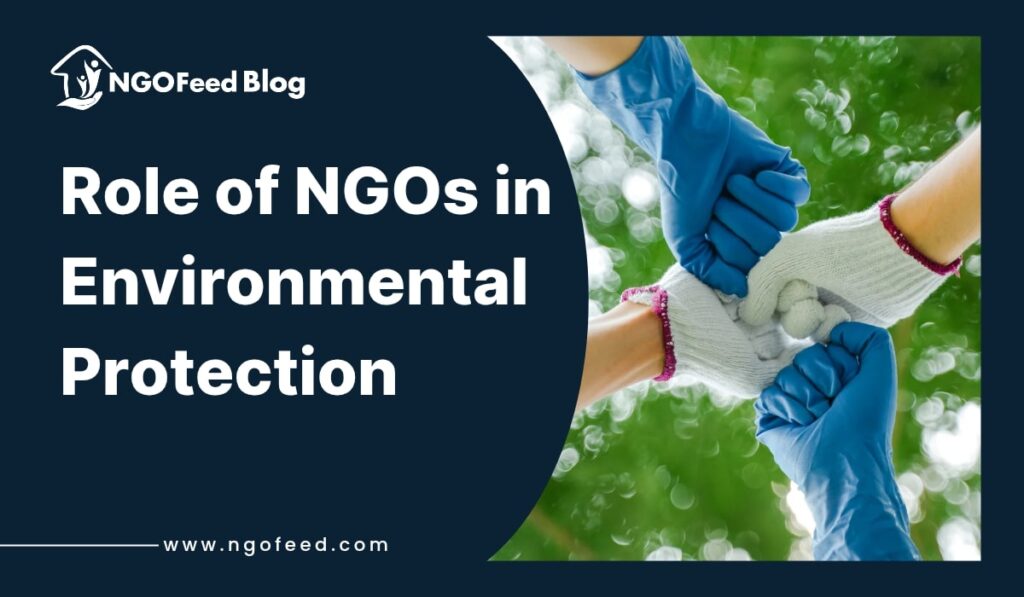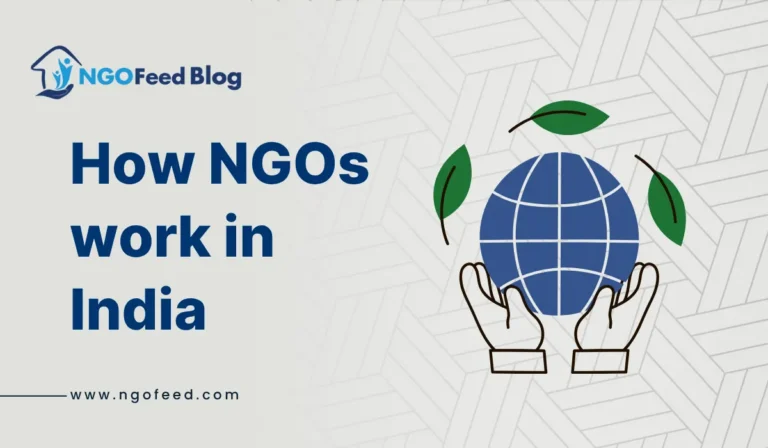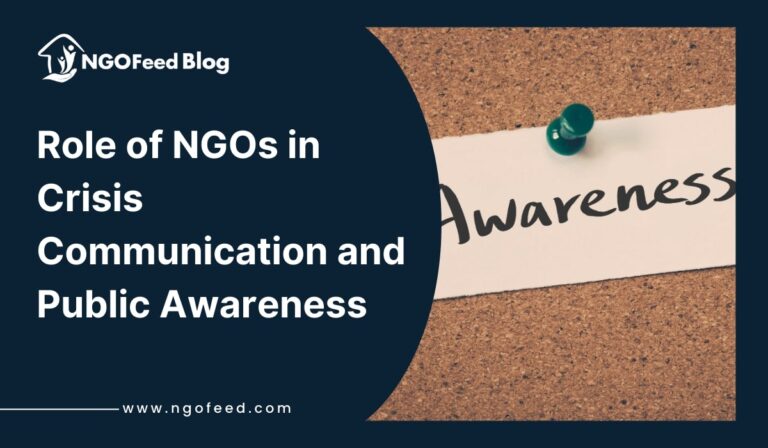Role of NGOs in Environmental Protection: India enjoys a reputation of being one of the richest bio-geographical regions in the world, although it suffers tremendously from air and water pollution, deforestation, soil degradation, and climate change. Non-governmental organisations (NGOs) are important partners in solving these problems and helping to preserve and sustain the environment in our country as a whole. The article further outlines how India stands in relation to the role of NGOs in sustainable development.
Table of Contents
What is Environmental Protection?
Environmental conservation is a practice aimed at preserving the environment and its resources to enhance the lives of both the environment and humans through an entity or an individual. It means defending our whitespace in a protective way that helps us to live. We cannot adjust properly to the pollution, lack of water, poor food quality, and the presence of specific microbes around the atmosphere.
Need for the Protection of the Environment
The environment is the main element that determines the quality of life for wild animals, and it is also essential for the good life of humans. A clean environment is what Mother Earth requires for the proper living of its inhabitants. We must live in a prosperous world and maintain our environment. Today, with the growing world, we are heading to the downgrading of a natural environment; we must start doing something to help our environment so that we can receive things that improve our lives.
Also Read: Role of NGOs in Water Conservation
Environmental Challenges in India
- Air Pollution: India has probably one of the worst pollution problems in the world, and the air quality is so poor that the national capital area and other major cities of India are very badly affected.
- Water Pollution: Pollution from rivers, lakes, and groundwater sources is a worldwide dilemma, mostly contaminated by wastes released from factories or inadequate wastewater treatment systems.
- Deforestation: Deforestation as a consequence of fast-spreading urban development and industrialization is now a major problem – habitat loss is one of the big issues that these forests face every day. It also results in the fueling of climate change.
- Climate Change: India is now one of the countries most prone to the effects of climate change, including rising temperatures, shifting rain patterns, and the rise in the number of extreme weather events.
Also Read: Role of NGOs in Wildlife Conservation
How NGOs Help in Protecting the Environment
Our natural resources are dispersed along geographical boundaries within human settlements and remote and inaccessible places. Furthermore, none of the government agencies will be able to hold or take care of those resources using the best methods. It’s at this stage that NGOs play a key role.
NGOs in India are groups of individuals that play a pivotal role in fulfilling mainly artistic, political, or social goals. Those accept the roles that include investigation of the detailed internal relationship of different natural resources, the assessment of resources, and the appropriate planning of resource management. They additionally help the government obtain the required information to come up with and develop a process for the implementation of a major environmental policy.
Today, with the rising need for environmental awareness and enforcement, the situation has become more severe than ever since. A crucial consequence of the global acceptance of the role of public awareness and the role of NGOs in ecological conservation has been noted.
The activities of these NGOs are directed towards issues of environmental protection like consciousness-raising, resource development and recording, the introduction of alternative livelihood, coordination and assistance for various governmental departments, attention delivery to habitat management and restoration etc. These NGOs, at either international, national, or regional levels, have been working hard to achieve the mentioned goal.
Also Read: Role of NGOs in NGOs in Conservation and Biodiversity Protection
Role of NGOs in Environmental Protection & Conservation
1. Advocacy and Awareness
The participation of Non-Governmental Organizations (NGOs) in India is of paramount importance in generating knowledge about environmental issues. They carry out awareness campaigns, impromptu workshops, and seminars that are aimed at informing the public about the significance of conservation and sustainable activities.
2. Research and Data Collection
Many NGOs take on the role of research to seek out data about environmental problems. Truly, this information is very important since it forms the basis from which policies are made and conservation programs initiated.
Also Read: Top NGOs in India
3. Policy Advocacy
A number of NGOs in India take part in policymaking processes by campaigning for conservation and environment-friendly development. Their work is oriented on changing relevant government regulations like conservation, pollution control, and renewable resource management.
4. Conservation Projects
Non-governmental organizations frequently engage in conservation projects that include the protection of endangered species and ecosystems and the degradation reversing processes of natural habitats. It is possible that they could establish partnerships with the neighbourhood communities and the local government to kick-start these initiatives.
Also Read: Role of NGO in Food and Nutrition
5. Community Engagement
NGOs partner with community people to implement and encourage sustainable behaviours. It is the community that implements the tree planting, waste management, and sustainable agriculture projects by means of which.
6. Legal Action
In those situations when environmental regulations are being breached, NGOs may initiate legal action to counteract polluters or the entities that are accountable for environmental damage. They serve like policemen to protect environmental regulations from being violated.
7. Capacity Building
TNGOs give training and capacity-building initiatives to communities and individuals as the most active members of society, and they also equip them with proactive strategies for environmental conservation. This, for example, covers education on sustainable farming practices, waste management, and renewable energy installation, respectively.
Also Read: Role of NGOs in Disaster Risk Reduction
Success Stories and Impact
- Chipko Movement: The NGO-led Chipko movement in the 1970s had been mainly about hugging trees so that they could be saved. It was definitely one of the factors that concentrated public attention on those problems. And it forced the authorities to take action for the protection of forests.
- Cleanup Drives: NQOs like the “Clean India Campaign” have attracted millions of volunteers who carried out cleanliness campaigns, waste management, and sanitation, leading to improved environmental conditions in many areas.
- Wildlife Conservation: Organizations such as the Wildlife Trust of India have proved to be a driving force in protecting endangered species like tigers and elephants through various conservation efforts and anti-poaching programs.
Challenges and Future Outlook
1. Funding
Due to the fact that NGOs in India normally face difficulties in securing sustained funding for their projects, the scale and the scope of their activities remain at the level that budgets will only allow for.
Also Read: Role of NGOs in Waste Management
2. Government Cooperation
Even though officials of some government bodies might be helpful in cooperating with NGOs, others may be rather suspicious or resistant during the implementation of the projects.
Read More :Ministry of Environment, Forest and Climate Change
3. Capacity Building
It is necessary to develop local community capacities for sustainable practices, and this remains a crucial long-term challenge.
4. Global Collaboration
India should prioritize its foreign partnerships for dealing with the globe’s environmental aspects of climate change.
Also Read: Role of NGOs in Disaster Management
Conclusion
The NGOs are the most significant driving force towards the conservation of an eco-friendly environment and sustainability in India at large. They become the link between bureaucracy and real-time execution of these policies, raise awareness, and actively participate in preserving India’s natural biodiversity.
Notwithstanding, there is a need to find solutions that can be applied to make the sustainable future a reality. The interplay of different non-governmental organizations, government agencies, the corporate sector, and the public becomes imperative to efficiently approaching India’s environmental problems.
Frequently Asked Questions (FAQs)
1.What is the Environment Protection Act?
2.What is the role of NGOs in environment protection in India?
NGOs in India promote environmental protection through awareness campaigns, tree plantation drives, research, advocacy, community training, and monitoring pollution issues. They support government initiatives, empower local communities, and encourage sustainable practices for long-term ecological balance.
3.What are Environment Protection Rules?
Environment Protection Rules are guidelines issued under the Environment Protection Act that specify pollution standards, waste management norms, hazardous substance handling, and compliance procedures to ensure industries and institutions follow safe and sustainable environmental practices across India.
4. What is the role of environmental organizations?
Environmental organizations play a vital role in protecting ecosystems through awareness campaigns, policy advocacy, conservation projects, research, and community engagement, promoting sustainable practices and encouraging responsible use of natural resources for long-term environmental health.










